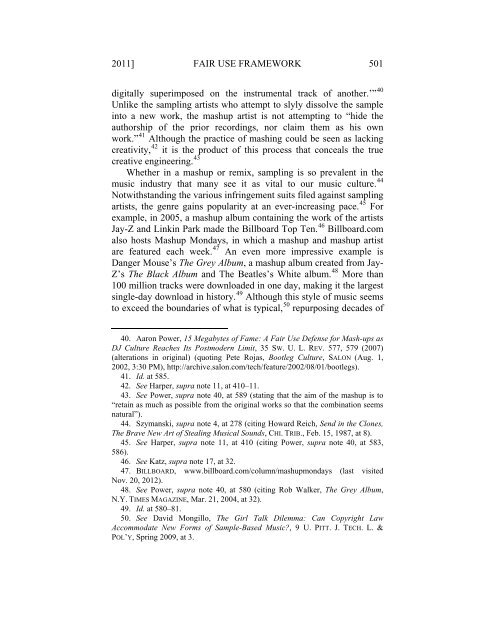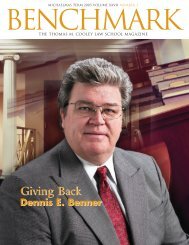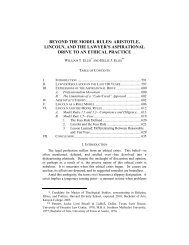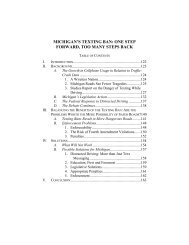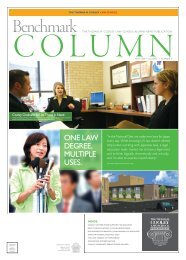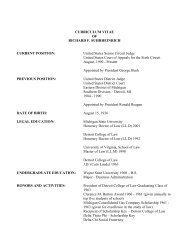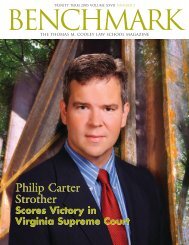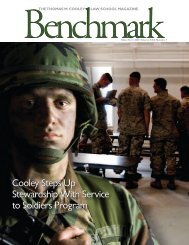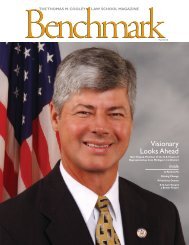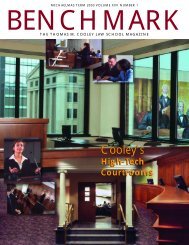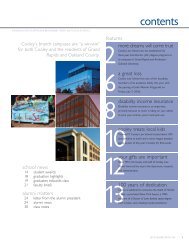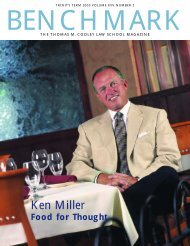Blanch It, Mix It, Mash It - Thomas M. Cooley Law School
Blanch It, Mix It, Mash It - Thomas M. Cooley Law School
Blanch It, Mix It, Mash It - Thomas M. Cooley Law School
You also want an ePaper? Increase the reach of your titles
YUMPU automatically turns print PDFs into web optimized ePapers that Google loves.
2011] FAIR USE FRAMEWORK 501<br />
digitally superimposed on the instrumental track of another.’” 40<br />
Unlike the sampling artists who attempt to slyly dissolve the sample<br />
into a new work, the mashup artist is not attempting to “hide the<br />
authorship of the prior recordings, nor claim them as his own<br />
work.” 41 Although the practice of mashing could be seen as lacking<br />
creativity, 42 it is the product of this process that conceals the true<br />
creative engineering. 43<br />
Whether in a mashup or remix, sampling is so prevalent in the<br />
music industry that many see it as vital to our music culture. 44<br />
Notwithstanding the various infringement suits filed against sampling<br />
artists, the genre gains popularity at an ever-increasing pace. 45 For<br />
example, in 2005, a mashup album containing the work of the artists<br />
Jay-Z and Linkin Park made the Billboard Top Ten. 46 Billboard.com<br />
also hosts <strong>Mash</strong>up Mondays, in which a mashup and mashup artist<br />
are featured each week. 47 An even more impressive example is<br />
Danger Mouse’s The Grey Album, a mashup album created from Jay-<br />
Z’s The Black Album and The Beatles’s White album. 48 More than<br />
100 million tracks were downloaded in one day, making it the largest<br />
single-day download in history. 49 Although this style of music seems<br />
to exceed the boundaries of what is typical, 50 repurposing decades of<br />
40. Aaron Power, 15 Megabytes of Fame: A Fair Use Defense for <strong>Mash</strong>-ups as<br />
DJ Culture Reaches <strong>It</strong>s Postmodern Limit, 35 SW. U. L. REV. 577, 579 (2007)<br />
(alterations in original) (quoting Pete Rojas, Bootleg Culture, SALON (Aug. 1,<br />
2002, 3:30 PM), http://archive.salon.com/tech/feature/2002/08/01/bootlegs).<br />
41. Id. at 585.<br />
42. See Harper, supra note 11, at 410–11.<br />
43. See Power, supra note 40, at 589 (stating that the aim of the mashup is to<br />
“retain as much as possible from the original works so that the combination seems<br />
natural”).<br />
44. Szymanski, supra note 4, at 278 (citing Howard Reich, Send in the Clones,<br />
The Brave New Art of Stealing Musical Sounds, CHI. TRIB., Feb. 15, 1987, at 8).<br />
45. See Harper, supra note 11, at 410 (citing Power, supra note 40, at 583,<br />
586).<br />
46. See Katz, supra note 17, at 32.<br />
47. BILLBOARD, www.billboard.com/column/mashupmondays (last visited<br />
Nov. 20, 2012).<br />
48. See Power, supra note 40, at 580 (citing Rob Walker, The Grey Album,<br />
N.Y. TIMES MAGAZINE, Mar. 21, 2004, at 32).<br />
49. Id. at 580–81.<br />
50. See David Mongillo, The Girl Talk Dilemma: Can Copyright <strong>Law</strong><br />
Accommodate New Forms of Sample-Based Music?, 9 U. PITT. J. TECH. L. &<br />
POL’Y, Spring 2009, at 3.


